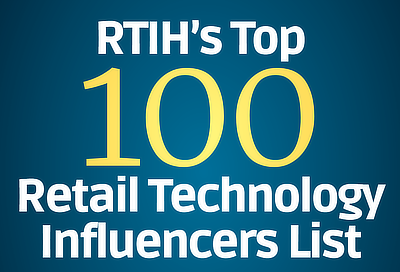Research
- January 31, 2021
Playing better in 2021: Retail -JLL
In retail as in life, the phrase “adapt or perish” applies. The coronavirus has accelerated consumers’ preferences and even demands, launching the industry years into the future. The question for retailers is: who’s ready to make that time travel journey? -from JLL
- January 24, 2021
Top 10 Global Consumer Trends 2021 -Euromonitor International
Resilience and adaptability are the driving forces behind the top global consumer trends in 2021. The pandemic created, influenced or accelerated each of these 10 trends, forever altering consumer behaviour. Despite the hardships faced in 2020, consumers have not given up. They continue to find their voice and push forward to advocate for a better tomorrow. -from Euromonitor International
- January 17, 2021
2021 retail industry outlook -Deloitte
Retail executives seem to agree that an economic recovery to pre-pandemic trajectory levels will take time, with six in 10 expecting recovery in the next one to two years—but a quarter see a longer timeline of two to five years. The old playbook and rules will likely have to be thrown out, and bold, differentiated action will be required to stand out from the competition. -from Deloitte
- January 11, 2021
World Bank Global Economic Prospects, January 2021
Although the global economy is emerging from the collapse triggered by the pandemic, the recovery is projected to be subdued. Global economic output is expected to expand 4% in 2021 but still remain more than 5% below its pre-pandemic trend.
- January 03, 2021
Tech Trends 2021 - Lead with Confidence - Deloitte Insights
40% of CEOs said their CIO or tech leader will be the key driver of business strategy—more than the CFO, COO, and CMO combined. 73% of respondents said their organizations are now planning major shifts in the way they approach supply chain management and procurement. -from Deloitte Insights
- December 27, 2020
NRF 2020 Organized Retail Crime USA Survey
Organized retail crime cost retailers an average $719,548 per $1 billion in sales, up from $703,320 in 2019. This is the fifth year in a row the figure has topped $700,000 and is up significantly from $453,940 in 2015.
- December 20, 2020
Who Are the Top Software Vendors in Retail? -RIS News
The 20th Anniversary edition of the RIS Software USA Leaderboard represents a major milestone in tracking the top technology vendors in the retail industry and naming the best of best. A favorite annual report and congratulations to the companies on this list. -from RIS News
- December 13, 2020
Beyond COVID: The Role Of Retail Employees In 2020
Many retailers had neither invested the funds nor training required for their workforce to meet the challenges 2020 brought at scale. When the COVID-19 pandemic struck the world in March of that year, these trends not only accelerated, but accelerated at warp speed. -from RSR
- December 07, 2020
Future of Retail 2020 - From a UK Point of VIew
The Future of Retail special report, published in The Times, examines how retail is expected to continue post-coronavirus, what brands need to know about social commerce, the new retail calendar, and much more. So what will shopping look like in 2021, 2025 and 2030? -from Raconteur
- November 30, 2020
How We'll Shop - Winners & Losers - USA and UK Reports
Covid-19 has drastically altered how, where, and who we shop with. What does the next year hold in store for your customers? How We’ll Shop, a new study by Brightpearl, reveals the most significant changes to shoppers’ spending habits since Covid and how this will impact on their behaviours and priorities over the next 12 months. -from Brightpearl.com
- November 23, 2020
McKinsey - The Reinvention of Retail
Consumers have been wrestling with uncertainty through the COVID-19 crisis. But their expectations for their retail experience—both online and in-store—continue to be high. Retailers that can adapt quickly enough will be well positioned when the recovery comes. -from mckinsey.com
- November 16, 2020
Retail Innovation in 2020: What's Here to Stay?
The Coronavirus pandemic has disrupted the retailing landscape globally. However, retailers' appetite for innovation has been impressive despite being confronted by a challenging environment. This research spotlights fifteen global retail innovations in 2020, highlighting those likely to become permanent features in the global landscape. -from Euromonitor
- November 09, 2020
Grocery Tech Trends 2020 - Adjusting to the New Normal
Seventy-two percent of those surveyed report they offer curbside pickup, 67% deliver straight to the customer’s door, 64% offer click-and-collect, and 36% are able to ship online orders from the store. More than 90% of sales still originate at the store level. Digital-influenced grocery shopping has been pushed to the forefront in the age of social distancing, and grocers are clearly looking to enhance their offerings. -from RISnews
- November 01, 2020
Technology Report 2020: Taming the Flux -Baine & Company
Rapidly changing markets, rising geopolitical tensions and the Covid-19 pandemic have created unprecedented challenges for tech companies. Bain’s inaugural report on the state of the industry examines how leading companies are investing in AI and automation, the hybrid cloud, the Internet of Things, flexible supply chains, virtual sales and other tools to increase resilience and accelerate growth. -from Bain & Company- October 26, 2020
2020 Deloitte holiday retail survey Reimagining traditions
While the majority of consumers (71%) are in a similar or better financial situation than last year, nearly 1 in 3 (29%) say that their household’s financial situation is worse year over year. In this season of uncertainty, price, value and convenience continue to be top considerations for consumers, as is the desire to get creative with how they celebrate the season with family, friends and pets, no matter the circumstances.
Page 12 of 35
















